Jordan economy nears inflection point
11 June 2025

Jordan’s leaders are well-versed in dealing with the economic fallout from regional turmoil, but the past year has stress-tested this crisis management strategy to the limit.
With President Donald Trump raising questions about future US financial support for Jordan, and halting grants for a large water desalination project on taking office, anxiety levels in Amman have risen substantially this year.
In 2024, US aid covered around 20% of Jordan’s government budget deficit, so the concern is understandable. Added to this is the threat of the reciprocal tariffs announced in April, which could hit Jordan with a 20% rate – thereby pushing it into the top 10 most affected economies in the world – and the Hashemite kingdom’s concerns about the Trump administration’s actions are grounded in reality. For while Jordan should be able to negotiate down its tariffs, its exports to the US – one-quarter of its total – may still feel the imprint.
All this comes on top of the regional headwinds that have hit economic growth and placed additional strain on already pressured public finances. The Washington-based IMF sees GDP growth being held back at 2.6% this year, down from 3.1% in 2023 – the year before the full hit of the Gaza conflict was registered. However, the fund also noted that a stronger export performance is offsetting weaker domestic demand.
Even so, the spillovers from the Palestine conflict, especially in Jordan’s tourism sector, which accounts for 15% of GDP, will remain a policy challenge.
Capital Economics warned Jordan’s economy would continue to struggle due to the effects of regional conflict and fiscal constraints. The consultancy says a budget contraction of at least 4% of GDP is required to stabilise and lower the public debt-to-GDP ratio, but this may prove too tall an order for the government and would certainly weigh on its GDP growth.
Lower growth has long-term consequences for Jordan, given its stubbornly high unemployment rate (averaging above 20% since 2020) and low labour force participation rate.
On the more positive side, the IMF sees inflation remaining low, at about 2%, reflecting the Central Bank’s commitment to monetary stability and the exchange rate peg. However, the current account deficit is projected to widen slightly to just under 5% of GDP in 2025, from under 4% in 2023, due to lower tourism receipts and lower prices for key exports.
The banking sector remains well-capitalised, with a capital adequacy level well above the regulatory minimum of 12%, noted the IMF. Non-performing loans remain relatively low.
Stress test results for the banking sector in 2024 suggested it is broadly able to withstand shocks even under the most severe scenarios. Bank mergers are also on the agenda, with Bank Al-Etihad preparing to acquire Investbank in what would be the country’s largest-ever banking consolidation.
US U-turn
Looking ahead, Jordanian officials believe the worst might be averted, having secured assurances from the White House that most foreign aid to Jordan – under which it receives an annual $1.45bn from the US – will survive intact and not be used as leverage in talks.
The reported resumption in March 2025 of payments from US firm CDM Smith, tasked with overseeing the $5bn Aqaba-Amman Water Desalination and Conveyance Project, will have come as welcome reassurance.
“What’s interesting is that the US quietly restarted the funding to Jordan, and we know King Abdullah has visited Washington DC a number of times, meeting with Trump administration officials,” says Annelle Sheline, a research fellow at the US-based Quincy Institute, and a former foreign affairs officer at the US State Department.
“Jordan has been very careful to cultivate relationships among both Republicans and Democrats, and that will have played a role in restarting this funding to Jordan.”
In addition, Jordan has secured funding from alternative sources, including the EU, which in January committed to extending a €3bn ($3.13bn) financial package. The 2025-27 package will include €640m in grants, €1.4bn in investments and €1bn in macro-financial assistance.
Despite these welcome support measures, analysts point out that the changing regional political weather may compromise Jordan’s capacity to attract financial support in future.
“Jordan has lost some of its value because of the Abraham Accords. It used to have a moderate Arab state role, with a relationship with Israel. But the value of that has really gone down. That’s why King Abdullah has been spending time in DC lobbying because he doesn’t know what Trump is going to come up with next,” says Neil Quilliam, associate fellow at the Middle East and North Africa programme at Chatham House.
Syrian opportunity
One factor that might positively impact Jordan’s economic prospects is the regime change seen late last year in its large neighbour Syria.
Jordanian figures show exports to Syria rose almost five-fold in the first two months of the year, reaching JD35.4m ($48.9m) compared to just JD6.1m ($8.5m) in the same two months of 2024.
Syria’s rehabilitation should also assist in the return of Syrian refugees from Jordanian territory, which number more than 500,000, reducing the considerable burden placed on Jordan’s economy. Further ahead, Syria’s sizeable reconstruction needs will put Jordan in an advantaged position to provide labour and construction materials.
“Syria’s opening is going to be beneficial in terms of trade,” says Quilliam. “Jordan isn’t necessarily going to be competing with Syria. The Saudis, the UAE, Qatar and Kuwait have been putting money into Jordan for quite a long time. And Syria is going to require a lot of construction materials that Jordan will be a transit for.”
Moving forward, Jordan may have a harder time getting funding out of Congress
Annelle Sheline, Quincy Institute
Fiscal jeopardy
The biggest cloud on the horizon is Jordan’s ability to maintain US funding over the long term.
The nearly $1.5bn a year that comes into Jordan from the US is authorised on a four-year cycle and so will have to be renewed at some point during the Trump presidency.
“That’s going to be the inflection point. They could be fine now for the next two years, but it’s going to get interesting,” says Quilliam.
As Sheline notes: “It [could be an] uphill battle, given Republican members of Congress were willing to vote against previous foreign aid, which suggests they would be willing to vote against funding for Jordan – given the perception that the US spends too much on sending money abroad. Moving forward, Jordan may have a harder time getting funding out of Congress.”
While the kingdom has overcome previous funding crises, and the prevailing logic is that Amman always muddles through, with a debt-to-GDP ratio of around 95%, the kingdom has remarkably little fiscal room in which to manoeuvre.
“The ratchet just gets tighter and tighter each year,” says Quilliam. “And it’s just getting closer and closer to something going wrong. If that $1.5bn from the US stops, then they’re in real trouble. That’s the backstop.”
MEED's July 2025 report on Jordan also includes:
Exclusive from Meed
-
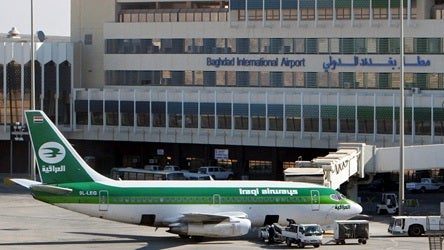 Iraq awards Baghdad airport PPP deal
Iraq awards Baghdad airport PPP deal29 October 2025
-
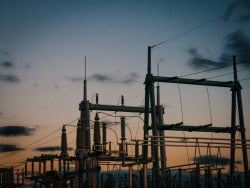 Saudi Electricity Company secures $3bn financing deal
Saudi Electricity Company secures $3bn financing deal29 October 2025
-
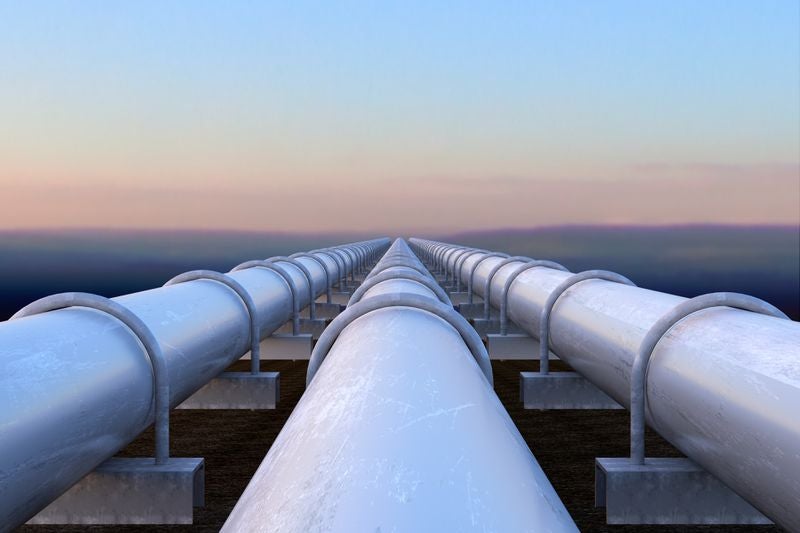 Design work completed for $1bn Libyan pipeline
Design work completed for $1bn Libyan pipeline29 October 2025
-
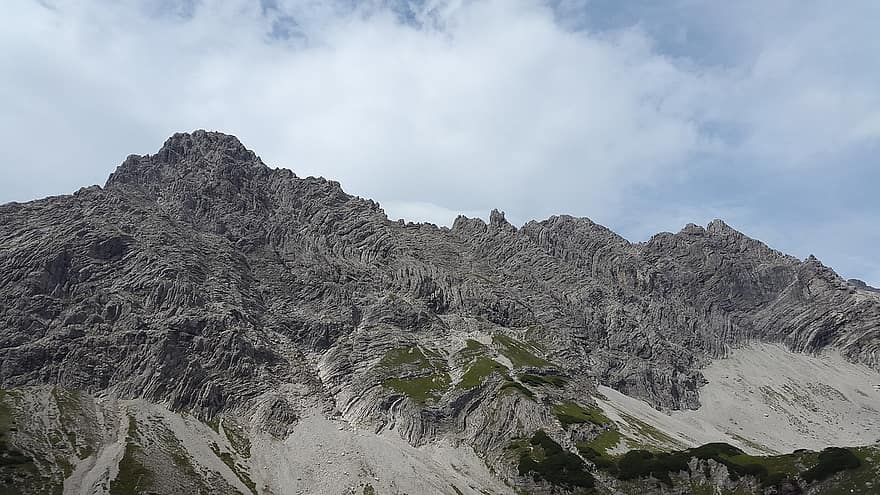 Qatari firm tenders Oman gabbro mining works
Qatari firm tenders Oman gabbro mining works29 October 2025
-
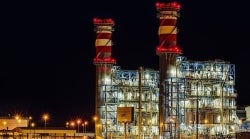 Kuwait forms project company for Al-Zour North expansion
Kuwait forms project company for Al-Zour North expansion29 October 2025
All of this is only 1% of what MEED.com has to offer
Subscribe now and unlock all the 153,671 articles on MEED.com
- All the latest news, data, and market intelligence across MENA at your fingerprints
- First-hand updates and inside information on projects, clients and competitors that matter to you
- 20 years' archive of information, data, and news for you to access at your convenience
- Strategize to succeed and minimise risks with timely analysis of current and future market trends

Related Articles
-
 Iraq awards Baghdad airport PPP deal
Iraq awards Baghdad airport PPP deal29 October 2025
Register for MEED’s 14-day trial access
Iraq has awarded a contract to develop Baghdad International airport on a public-private partnership (PPP) basis to a consortium comprising Luxembourg-based Corporacion America Airports (CAAP) and local firm Amwaj International.
According to local media reports, the estimated $764m contract covers the rehabilitation of airport infrastructure, construction of a new passenger terminal, and operations and maintenance under a 25-year concession.
In a statement on its website, the Ministry of Transport said the airport’s initial capacity is expected to be around 9 million passengers, gradually increasing to 15 million.
Iraq’s Ministry of Transport and General Company for Airports & Air Navigation Services received the bids earlier this month, MEED reported.
The bidding consortium included:
- Asyad Holding / Top International Engineering Corporation / Lamar Holding / YDA Insaat / Dublin Airport Authority (Saudi Arabia/Saudi Arabia/Saudi Arabia/Turkiye/Ireland)
- Corporacion America Airports / Amwaj International (Luxembourg/Iraq)
- ERG International / Terminal Yapi / ERG Insaat (UK/Turkiye/Turkiye)
The media report added that the winning consortium offered the government 43.05% of total airport revenues.
The Asyad-led consortium offered 38.05%.
The ERG International-led consortium was disqualified from the bidding process.
The International Finance Corporation (IFC), a member of the World Bank Group, is the project’s lead transaction adviser.
https://image.digitalinsightresearch.in/uploads/NewsArticle/14971278/main.jpg -
 Saudi Electricity Company secures $3bn financing deal
Saudi Electricity Company secures $3bn financing deal29 October 2025
Saudi Electricity Company (SEC) has signed a $3bn financing agreement with a consortium of international banks at the Future Investment Initiative Forum (FII9) in Riyadh.
The financing comes as SEC continues to expand its project portfolio to meet rising electricity demand. In September, SEC outlined plans to invest SR220bn ($58.7bn) in power projects between 2025 and 2030.
This includes SR135bn ($36bn) and SR85bn ($22.7bn) for transmission and distribution, respectively, and is part of long-term plans to meet growing electricity demand while improving grid efficiency and reliability.
The financing partners include the UAE's Abu Dhabi Commercial Bank, Abu Dhabi Islamic Bank, Dubai Islamic Bank and Emirates NBD.
Also included are Bank of East Asia (Hong Kong), Bank of China, Barclays (UK), China Construction Bank, HSBC (UK), Industrial and Commercial Bank of China (China), ING (Netherlands) and Mega Bank (Taiwan)
The state-controlled utility, majority-owned by the Public Investment Fund (PIF), has dominated procurement activity in the power sector in 2025, awarding approximately $6bn-worth of contracts.
This has been led by two standalone projects in Dawadmi and Riyadh, each with a capacity of 500MW/2,000MWh and an estimated value of about $600m.
The utility continues to advance other major developments including the PP13 and PP14 combined-cycle gas turbine (CCGT) power plants in Riyadh. In October, it signed $3.4bn in offtake deals for the plants, which have a total capacity of 3,356MW.
It also recently reached financial close for Saudi Arabia’s Qurayyah CCGT independent power project (IPP) expansion.
SEC will develop, finance, build, own and operate the 3,010MW plant as part of a consortium with Saudi Arabia's Acwa Power and Hajj Abdullah Alireza & Company (Haaco).
Alongside its financing agreement, SEC launched a new Supply Chain Financing Programme during FII9 in partnership with local fintech Manafa and US-headquartered SAP Taulia, supported by the Saudi Industrial Development Fund.
The initiative aims to improve liquidity across the energy supply chain and enable suppliers to access fast financing at more competitive rates.
https://image.digitalinsightresearch.in/uploads/NewsArticle/14971266/main.jpg -
 Design work completed for $1bn Libyan pipeline
Design work completed for $1bn Libyan pipeline29 October 2025

Front-end engineering and design (feed) work has been completed for the major oil pipeline that will extend from oil fields in the south of Libya to the oil export terminal of Es Sider, according to industry sources.
Libya’s Waha Oil Company, a subsidiary of state-owned National Oil Corporation (NOC), is developing the pipeline.
The 700-kilometre pipeline will have a diameter of 32 inches and the capacity to transport 1 million barrels a day (b/d) of oil.
One source said: “It is crucial that the existing pipeline is replaced. The existing pipeline is suffering frequent leaks and cannot handle higher pressures.
“In 1960, when the pipeline was installed, the pipe thickness was 36mm, but it is now so worn out that this has been reduced to around 8mm across much of the pipeline. In some spots, it is even less than 8mm.
“Production cannot be increased at the oil field due to this ageing facility.”
Waha is preparing to eventually tender an engineering, procurement and construction (EPC) contract for the project, which is estimated to have a value of between $1bn and $1.25bn.
Although the pipeline’s actual usage is unlikely to exceed 300,000 b/d for some time after its completion, it is being designed to be ready for a significant increase in oil production from Libya’s southern oil fields.
It is unclear when Waha plans to issue an invitation to bid for the project’s EPC contract.
In 2012, Waha announced a project to replace key oil pipelines in Libya, but funding issues delayed the timeline and invitations to bid were never issued.
In January 2024, MEED reported that Waha was considering plans to boost its production by 1 million b/d.
At the time, the subsidiary was producing about 300,000 b/d.
Earlier this month, NOC announced that the country’s crude oil production had reached 1,383,430 barrels a day (b/d).
The company said that natural gas production was 2,519 million cubic feet a day (cf/d), while condensate production was 49,013 b/d.
NOC said it aimed to further increase production capacity to approximately 1.6 million cf/d by 2026.
https://image.digitalinsightresearch.in/uploads/NewsArticle/14970171/main.jpg -
 Qatari firm tenders Oman gabbro mining works
Qatari firm tenders Oman gabbro mining works29 October 2025
Register for MEED’s 14-day trial access
Qatar Primary Materials Company (QPMC) has issued a tender for additional works at its gabbro mining development in the Khatmat Milaha area of Oman, close to a border crossing with the UAE.
The broad scope of work involves the remaining works for two gabbro quarries and the construction of an export jetty at Khatmat Milaha, state-owned QPMC, also known as Al-Awalia, said in the tender notice.
Firms have until 11 November to submit bids for the tender, QPMC said.
QPMC owns a 3 million tonne‑a‑year (t/y) gabbro quarry at Khatmat Milaha in Oman, which is understood to have been commissioned in 2020. The quarry has an expandable capacity of 7 million t/y.
The Omani quarry project had been planned for a number of years. In 2015, QPMC signed an agreement with Belgian firm Rent-A-Port to start work on the Khatmat Milaha quarry project.
Rent-A-Port was the consultant for QPMC’s gabbro port in Qatar. A joint venture of Denmark’s FLSmidth and Sixco completed the estimated QR1.6bn ($430m) contract to build the aggregate berths in 2017.
https://image.digitalinsightresearch.in/uploads/NewsArticle/14968152/main2817.jpg -
 Kuwait forms project company for Al-Zour North expansion
Kuwait forms project company for Al-Zour North expansion29 October 2025
Register for MEED’s 14-day trial access
Kuwait has formally established a new public shareholding company to manage the next stages of the Al-Zour North independent water and power plant (IWPP).
The Gulf Alliance for Power & Water Company will be responsible for the construction, implementation, management, operation and maintenance of Al-Zour North IWPP phases two and three.
The Al-Zour North phases two and three IWPP involves constructing a 2,700MW power plant and a 120-million-imperial-gallon-a-day desalination facility. The project’s total estimated value is approximately $4bn.
In August, Saudi Arabia’s Acwa Power and Kuwait-based financial institution Gulf Investment Corporation (GIC) signed a contract to develop the project, which will be the country’s largest IWPP.
The consortium of Acwa Power and GIC will hold 40% of the project company through Al-Zour Kuwaiti Second & Third Holding Company.
The Public-Private Partnership Authority will hold 10% on behalf of government entities, while 50% will be offered to Kuwaiti citizens through a public subscription process.
Al-Zour North IWPP phases two and three is owned by the Kuwait Authority for Partnership Projects (Kapp) and the Ministry of Electricity, Water & Renewable Energy.
It will be developed under a build-operate-transfer model with a 25-year offtake agreement.
Sepco3 is the EPC contractor for the project.
The project company has been set up with an authorised and issued capital of KD197.032m ($639m).
This capital is divided into 1.97 billion shares, each with a nominal value of 100 fils. The paid-up capital at the time of establishment is KD49.2m.
https://image.digitalinsightresearch.in/uploads/NewsArticle/14963914/main.jpg



